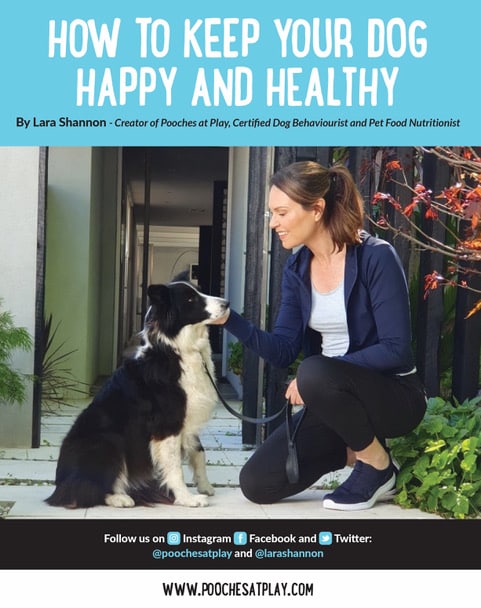

Over the past couple of weeks I have written a number of articles about specific dog behaviour and training issues including excessive barking and anxiety. From the response we have seen on our social media it is clear that many owners are having trouble understanding why their dogs are ‘acting out’ and are unsure what to do about it.
Firstly, it’s worth remembering that a lot of ‘problem’ dog behaviour is merely an unwanted behaviour or bad habit in the eyes of the owner, and that problem behaviour to one owner is not necessarily a problem to another.
Some owners can be unrealistic about how they expect a dog to behave and, particularly if they have never owned a dog before, they may not be aware of what it takes to help ensure certain dog behaviours are managed before they become a ‘problem’.
With puppies, the main aim is to prevent inappropriate behaviour from becoming an established habit which can happen if owners have the attitude that they will grow out of it, or they are actually rewarding certain behaviours that can go on to become a ‘problem’ behaviour as they grow older.
Problem dog behaviours do tend to show early warning signs, but it can be hard to convince new owners, especially of puppies, that a behaviour they are allowing their dog to get away with can lead to major problems later on.
That’s why early training and socialisation plays such an important role in a puppy’s life. As is setting boundaries with your puppy to ensure they don’t go on to become a problem as they grow bigger.
When dealing with adult dogs, there are of course many causes and reasons for dog behaviour problems and can include behaviours resulting from an aversive experience or series of events, poor leadership and/or handler/owner inconsistency, long standing behaviours that have been exhibited over an extended period of time (ie: from puppyhood) and even behaviours that are expressed as a result of the treatment of another problem behaviour.
However, so many times when owners say ‘my dog has anxiety’, or ‘my dog is so naughty’ with no real thought as to what is behind the dog’s behaviour, it can often be put down to boredom and a lack of mental and physical stimulation.
I hope by shedding some light on the reasons why our dogs are exhibiting problem behaviour, and providing some solutions via the links throughout this blog, owners can begin to understand just how important it is to ensure our dogs have enough environmental enrichment in their lives to help reduce some of the most common problem behaviours to at least manageable levels.
Dealing with some of the common day to day dog behaviour problems I see, a lot really can be reduced to some degree by ensuring they receive the appropriate levels of exercise for their age, breed and size. For the large majority of adult dogs this means AT LEAST one 30 minute walk a day, whilst active breeds require much more. Sadly, many dogs do not get a daily walk, so it is no wonder we so many problems.
Dogs also need human companionship, mental stimulation, comfort in their environment, a nutritionally balanced diet and time to socialise with fellow dogs, all of which play a big part in helping keep problem behaviour at bay. The one caveat I will add is to be careful on the dog to dog interaction side of things if your dog has fear-based aggression issues when interacting with other dogs. Especially if due to anxiety, negative past experiences or a lack of socialisation. In these instances definitley seek the services of an experienced trainer to help.
Most ‘problem’ dog behaviour I see can usually be put down to the fact that the dog’s life is lacking in quite a few of these areas, or may even be pain induced. So, it is no wonder we have so many owner complaining about their dog having separation anxiety, digging, barking, chewing and so on.
Don’t get me wrong, sometimes dogs are simply genetically predisposed to conditions like anxiety. Generally however it is more a case that their basic instinctual needs are not being met, an aversive event in their life has generated their responses in the past or the present situation, a lack of socialisation, or their behaviour has been reinforced by owners.
So before a dog is relegated to the ‘too hard’ or ‘too stupid’ basket to fix, and continues to get punished for their behaviour, I would implore all dog owners to assess and ensure their dog is in fact provided with the right levels of environmental enrichment to meet their individual needs. Particularly, for dogs that are left alone all day whilst their family is out at work.
It is important to also understand the signs of anxiety and also talk to your Vet or a Vet Behaviourist if you do suspect your dog has anxiety, as medication may also play a role in helping to address the underlying issue.
Our dogs provide us with so much love, devotion and companionship that they deserve to have their most basic needs met. Yet sadly still so many aren’t.
To help find out what is really going on with your dog, it really is worth having a qualified and experienced trainer come and do an assessment and provide a tailored environmental enrichment plan to help.
You may be surprised at how quickly problem dog behaviour can improve when your dog is receiving the appropriate levels of mental and physical stimulation they require.
Till next time,
Lara & Darcy x
About the Author: Lara Shannon is co-Host of Pooches at Play and has completed a Certificate III in Dog Behaviour & Training with the National Dog Trainers Federation. Lara also runs her own dog training, minding and walking business in Melbourne’s Bayside area.

The benefit of interactive toys for dogs


Winter safety for dogs – Top Tips

The benefits of crate training your dog


Receive a FREE copy of the E-Book “How to Keep your Dog Happy & Healthy”


Get your paws on Lara Shannon’s best selling books ‘Eat, Play, Love (your dog) and World of Dogs.
Available in Australia, USA, UK and Canada.